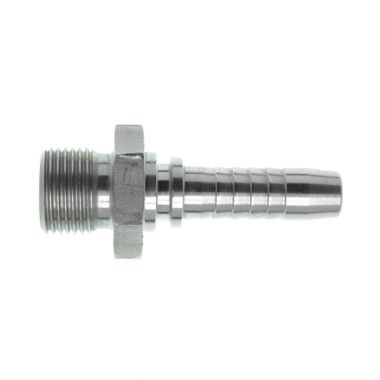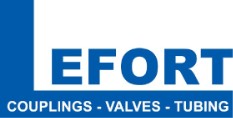
From chemical resistance to hydraulic power, custom PTFE/stainless steel hoses deliver ultimate reliability.
🔧 Custom Fluid Transfer Solutions: PTFE Hose with Stainless Steel Braid vs. Custom Hydraulic Hoses
When designing fluid transfer systems, hose assemblies are a critical component, and the choice between materials and customization is essential for optimal performance, safety, and longevity. Two prominent options are PTFE hoses with stainless steel braid and custom hydraulic hoses.
PTFE Hose with Stainless Steel Braid
The PTFE (Polytetrafluoroethylene) hose, often reinforced with an outer stainless steel braid, offers exceptional properties that make it a superior choice in many challenging applications:
- Exceptional Chemical Resistance: PTFE is highly resistant to almost all common solvents, acids, and bases, making it ideal for transferring harsh or corrosive chemicals, as well as pharmaceutical and food-grade fluids.
- Wide Temperature Range: These hoses can typically withstand continuous service temperatures from -73°C up to +260°C (-100°F to 500°F), far exceeding the limitations of many rubber or thermoplastic hoses.
- Durability and Pressure Rating: The stainless steel braid provides the necessary mechanical strength and protection, allowing the hose to handle high working pressures (often up to several thousand PSI). The braid also offers excellent abrasion resistance.
- Non-Contaminating: PTFE has unique non-stick properties and is non-contaminating, which is crucial for applications requiring high purity, like in the medical and food processing industries.
- Flexibility: While sometimes less flexible than pure rubber, especially in larger diameters, PTFE can be manufactured as smooth bore (for high flow rates and easy cleaning) or convoluted (for enhanced flexibility). An anti-static (conductive) PTFE core is often available for high-flow rate applications to prevent static charge buildup.





Custom Hydraulic Hoses and Fitting Selection
Custom hydraulic hose assemblies are essential for systems where standard, off-the-shelf sizes and configurations simply won’t fit or perform optimally. Customization ensures the hose perfectly meets the application’s unique requirements for length, pressure, temperature, and material compatibility.
Material Choices for Custom Hydraulic Hoses
While rubber remains a common and cost-effective core material for standard hydraulic applications (due to its flexibility and oil resistance), custom options often include:
- PTFE: As noted above, used for superior chemical resistance and extreme temperature stability.
- Thermoplastic: Chosen for its lighter weight, good insulation, and moderate chemical resistance.
The external reinforcement for high-pressure hydraulic applications typically involves multiple layers of braided or spiraled steel wire (e.g., SAE 100R grades) around the core to manage extreme pressures.
Crucial Element: Custom Fitting and End Connection Selection
The choice of end fittings and connections is arguably the most critical part of a custom assembly, directly impacting system integrity, seal quality, and safety. Suppliers offer a vast range of options, allowing the user to select the thread type, material, and angle needed:
- Thread Types and Standards: Fittings must match the mating port. Common standards include AN/Dash, BSPT, BSPP, NPT, SAE, and various flange connections.
- Fitting Materials: While carbon steel is common, 316L stainless steel is preferred for PTFE assemblies and applications where enhanced corrosion resistance is required (e.g., marine or chemical environments). Fittings are often CNC machined for precision.
- Angles and Orientation: Fittings are available in straight (0°), 45°, 90°, and other angles. For installation, the orientation (or angle of rotation) between the two end fittings is precisely set during the crimping process to ensure the hose installs without twisting, which is a major cause of premature failure.
- Assembly Method: High-quality hose assemblies are made by crimping specific fittings (like the « flare thru » or special PTFE fittings) onto the hose. Reusable fittings are also an option for some applications.
In summary, choosing between a PTFE braided hose and a custom hydraulic hose involves prioritizing the application’s needs: chemical inertness and temperature extremes point to PTFE, while custom lengths, high pressure (often with rubber or thermoplastic), and specific geometry are key features of custom hydraulic assemblies, with the precise selection of fittings and end connections being non-negotiable for system performance.





